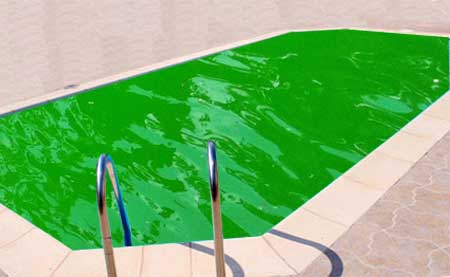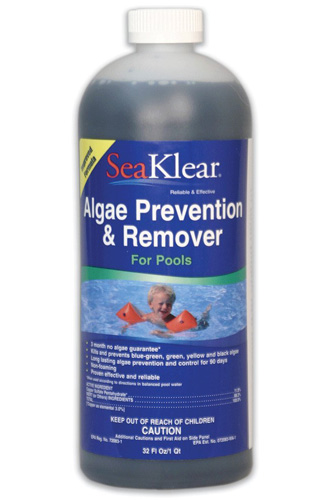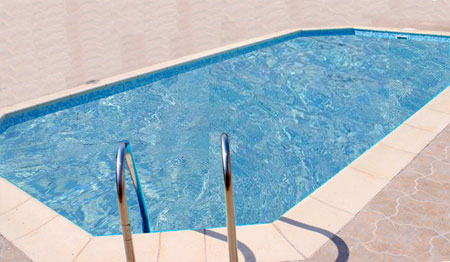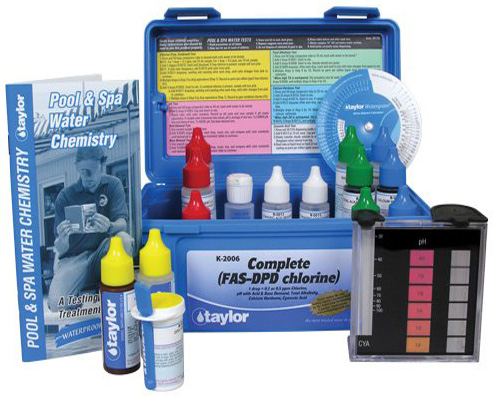During swimming pool maintenance, very often it is need to add chlorine. Sometimes the chlorine level becomes too much high. Therefore, it is need to lower swimming pool water chlorine level. Before, discussing “how to lower pool chlorine?” we discuss about why is chlorine used in pools water, how does chlorine work and dangers of chlorine.
| Table of Contents: |
Why is chlorine used in pools water
Why is chlorine used in pools? Due to insufficient chlorine in pool water algae, micro-organisms and bacteria are growth rapidly. These causes cloudy water, waterborne disease, and unsatisfactory sanitation of the water.
How does chlorine work
Chlorine kills microorganisms and bacteria in water by the process of chemical reaction. When the chlorine reagents discharge into the pool water then, it break into various chemicals such as hypochlorous acid (HOCl) and hypochlorite ion (OCl–). Both these chemicals attack the lipids in the cell walls of bacteria and microorganisms and destroy the enzymes and structures inside the cell through the oxidizing reaction. Hypochlorous acid is more oxidizing agent then hypochlorite ion; normally it takes several second for this reaction in pool water whereas hypochlorite ion can takes up to 30 minutes. The production of HOCl and OCl– depends on pH level of the pool water; it is highest when the pH level of pool water is between 7 and 8. Too high pH indicates lower production of HOCl (hypochlorous acid) and OCl–. During cleaning the pool, they may combine with nitrogen compounds such as ammonia, or break into single atoms and deactivated. Moreover sunlight, water temperature also effects on the rate of this reactions. Therefore, more chlorine is required to the pool.
Cl2 + H2O → HOCl + HCl
Dangers of chlorine
Although proper dosages of chlorine is beneficial for pool water, but Extra chlorine is not good for human health. It has many side effects that can be aggravating to humans. Generally chlorine is a carcinogenic chemical. Additional chlorine in pool water can irritate the eye, nose and skin, creates coughing, wheezing, or even asthma. Here the chlorine is calculated with the combination of free and combined chlorine. Excess chlorine can also degrade the color of swimsuits and towels, damage hair, Pool surfaces and equipment. Therefore, it is essential to maintaining proper level of chlorine so that we can avoid the dangers of chlorine.
In The Swim Pool Water Chlorine Neutralizer – 2.25 lbs.
Swimming pool chlorine levels
Swimming pool chlorine levels should be kept at a certain range to ensure sufficient sanitation or avoiding dangers of chlorine. The desirable amount of free available chlorine in the pool water is 1.0-3.0ppm. It is better to keep 2.0ppm. In addition combined chlorine should be between 0 to 0.5 ppm.
How to lower pool chlorine
There are many easy way to reduce the chlorine level in pool water. Although indoor pool water can be more complicated to handle, but a lot of alternative are available. Some of them are described below:
1. Stop adding Chlorine:
If the chlorine level of your pool water is higher than 3ppm then, immediately stop adding more chlorine to the water until the level is suitable again. To stop adding chlorine, turn off automatic chlorinator, chlorine feeder or generator; remove the chlorine floater or chlorine tablet from the pool skimmer which system you are used.
2. By replacing existing pool water
By replacing some amount of pool water, someone can reduce the chlorine level; this may be one third. Then add same amount of fresh water, it will dilute the chlorine and you will able to lower the chorine level in pool water. This process is costly. Moreover, the water becomes out of balance such as calcium hardness, pH, alkalinity, and cyanuric acid levels.
3. With natural sunlight
Sunlight can remove chlorine naturally. Uncovered the pool and permit the sunlight to enter the pool so that it can reduce the chlorine level of pool water. This process may take a few days. It is recommended that it should be monitor if the chlorine level is lessening. If you have enough time before using the pool again, then this process is very good. You can use UV lamp as an alternatives of sunlight. On the other hand if you have few times, then you can follow other process. But you have to aware, it can effect on the water balance of the pool.

In The Swim Pool Water Chlorine Neutralizer – 15 lbs.
4. With a chlorine neutralizer
Several neutralizing chemicals such as Sodium Thiosulfate, Sodium Sulfite, Sodium Bisulfite, Sodium Metasulfite can reduce the chlorine in pool water. It is not wise decision to use too much chlorine neutralizer, it is also creates troubles.
4a. By using Sodium thiosulfate
The most common chlorine neutralizer is Sodium thiosulfate. Always discharge an accurate dose gradually; normally 75ml of sodium thiosulfate can reduce about 1 ppm of chlorine in 10,000 gallons of water. Since the Sodium thiosulfate is acidic, hence it reduces the pH level. Therefore, it is need to add pH increaser, after using this.
4b. By using Hydrogen Peroxide
Hydrogen peroxide is another chlorine neutralizer that can be used to lower the chlorine level. It works when the pH levels is higher than 7 and less effective at lower pH level. So if the pool has lower pH, then you have to adjust the pH before using hydrogen peroxide. It is a cheap chemical.
The other chlorine reducing chemicals are Sodium Sulfite, Ascorbic Acid, Sodium Bisulfite and Sodium Metasulfite. When you use any chemicals you should follow the instructions on the chemicals, otherwise it can lead to worse problems. Always test the pool pH after using these neutralizers.
In The Swim Pool Water Chlorine Neutralizer – 15 lbs.
Conclusion
So if the pool have high chlorine levels, you need not to worry, the above few steps will help you to lower pool chlorine level and back to normal.




